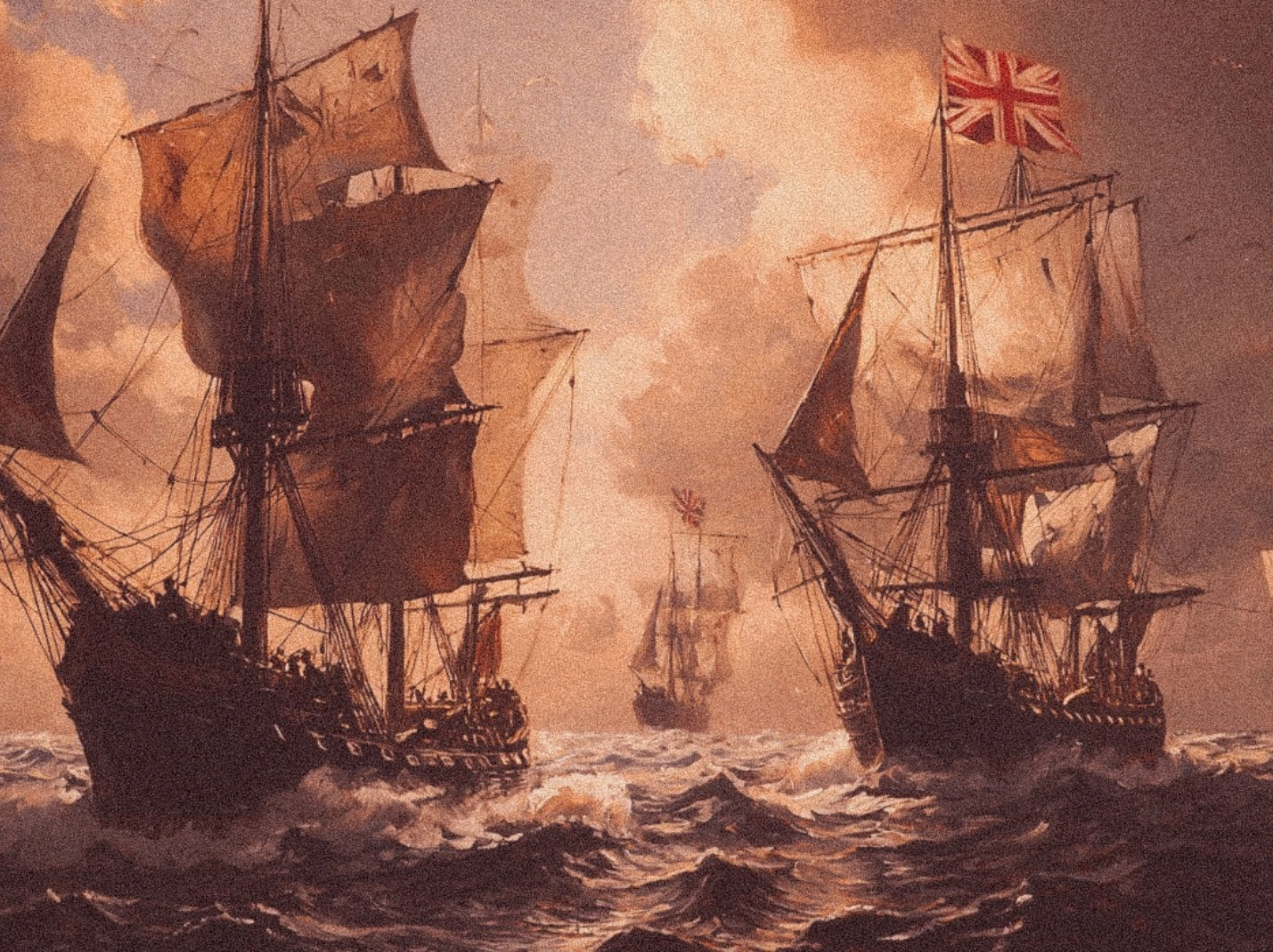
It was March 30, 1775. King George III delivers another blow to the American colonies, formally endorsing the New England Restraining Act.
This Act, a direct response to the Continental Association’s 1774 boycott of British goods, was designed to strangle the rebelling colonies into submission. By royal decree, New England’s trade was restricted solely to Britain and the British West Indies, cutting off access to broader international markets. Additionally, the Act barred New England ships from the North Atlantic fisheries—a move that amounted to economic warfare against a region heavily dependent on fishing for both sustenance and income.
But Massachusetts, New Hampshire, Rhode Island, and Connecticut braced for the fight. The Crown’s increasingly punitive measures—beginning with the Intolerable Acts exactly a year earlier—had only strengthened colonial resolve. And for Britain, the timing of this latest assault could not have been worse; it came just days after Patrick Henry’s electrifying “Give me liberty or give me death!” speech to the Second Virginia Convention.
Every attempt by Britain to tighten its grip only drove the colonies further toward defiance. The Restraining Act spurred even greater resistance, with more colonies—Pennsylvania, New Jersey, Maryland, Virginia, and South Carolina—later joining the boycott and mobilizing their militias.
Nearly 250 years later, a similar battle over trade and economic control plays out—not between an empire and its colonies, but between America and her trading partners. Just as the British Crown sought to make its colonies economically dependent on the empire, America has become reliant on foreign manufacturing for basically everything.
Free trade, when truly reciprocal, fosters mutual economic growth and prosperity. After all, economic ties have allegedly staved off major wars—nations solve disputes through courts and commerce, not conflict. But trade must be fair, and today, America consumes far more than it produces, leading to lost jobs, declining wages, and dangerous dependencies on foreign supply chains—our vulnerabilities were exposed during COVID-19.
Once-thriving industrial hubs in the Midwest, where manufacturing plants bustled with activity, have become ghost towns—literally. The promise that America has “moved beyond manufacturing” has left many communities hollowed out while foreign competitors maintain their production dominance.
But the current administration has taken up the call for reform; we are declaring independence again. Seeking to recalibrate global trade in favor of American interests, it is imposing tariffs on foreign-made goods and incentivizing domestic production.
Whether by monarchy or bad policy, economic restriction has only had one effect on America. Then, as now, it fuels the nation’s desire for autonomy.
Art by Beck & Stone

Rather than expressing my amateurish economic thoughts, I’ll refer to something I saw today in the NYT.
I suspect Professor Furman has it right. And I think Trump is crashing. Just stocks are a disaster. And we’re just getting started.
“Trump Is About to Bet the Economy on a Theory That Makes No Sense
March 31, 2025”
Jason Furman
Dr. Furman is a professor of the practice of economic policy at Harvard University and was chairman of the White House Council of Economic Advisers from 2013 to 2017.
So, Dr. Furman is an expert and we should take his word as Gospel? I’m sure I could find someone equally an expert in economics that would disagree with your cherry picked sage. Many big business executives (e.g., Mark Cuban and others) and economic experts (e.g., Paul Krugman and many others) predicated absolute economic doom for President Trump’s first term based on his economic policy. The results were exactly the opposite. That said, do you think it fair trade policy for members of the European Union and others like Mexico, Canada and China to have tariffs on our goods that are 2-10 times more than the tariffs we put on their goods? Is the stock market a good indicator of the economy? No, it’s an indicator of how investors feel. Feelings are not often rational. How did the stock market do during 2020 and 2021 when we had 9% inflation because the government was drunk printing money and the economic effects of a lockdown were negatively affecting millions of Americans? It did very well. We’ll see what happens, but I’m hopeful that only the short-term will be rocky as “experts” and political hatchet people scare investors with “tales of woe” but, the long-term economic results will be very bright as Trump’s RECIPROCAL tariffs have there effect on Mexico, Canada and the E.U. These countries political leaders are willing to take a hit in the short-term to thwart President Trump. They are all members of either the progressive globalist elite or leftist enemies of the U.S. and do not want people in their own countries to see Trump’s economic vision succeed. They all have different visions for their countries and they do not want their large middle classes to see conservative policies succeed as theirs haven’t. Excuse the anachronism but, time will tell.
Magra makes an interesting point in his dissertation as to the causes of the American Revolution.
“[L]aborers were less concerned with constitutional rights and more alarmed at the widening disparity between rich and poor in the colonies. Colonial elites were successful at linking this alarm to what they perceived as a corrupt imperial political system, thus mobilizing the masses.
Naval impressment in colonial port cities and the increasing inability of working men and
women in the colonies to purchase their own land further inflamed public sentiment against the British Empire.”
Isn’t that the MAGA movement today?
the banks of Newfoundland, the coast of Labrador, or within the river or gulf of Saint Lawrence, or upon the coast of Cape Breton, or Nova Scotia
https://en.wikipedia.org/wiki/Gulf_of_Maine#/media/File:GulfofMaine2.jpg
Those are all Canadian fisheries today, most north & east of the above map. I’m surprised Georges Bank wasn’t mentioned although there was the “or any other part of the coast of North America.”
The other thing to remember here is that it wasn’t just the fishermen who were out of work — this was all *salt* cod and there was another industry of drying it in flake yards all along the coast. Salt was rubbed into the fish and they were laid out on trays to dry — I’ve only seen this done by hanging an individual cod from a pine tree but your average flakeyard would be the size of a football field or more, and there was a lot of labor involved in this.
The industry was dying in 1897 when Kipling wrote Captains Courageous but up through the 1920s there were people sailing salt cod down to the West Indies, it initially had been used to feed the slaves but prior to refrigeration, it was a preserved meat that could either be boiled to make chowder or chewed on like beef jerky.
Massachusetts put a cod on license plates in 1928 and 1929 (plates were issued annually back then) and it was controversial because the catch had been declining for a decade then. To this day a wooden “Sacred Cod” hangs in the state legislature.
In 18th Century New England, I have no doubt that it kept a lot of people going through the winter. The other thing not often mentioned is the extent to which the Revolution was a Civil War, and there are elements of that in this. Then, like now, it was the establishment versus the deplorables…